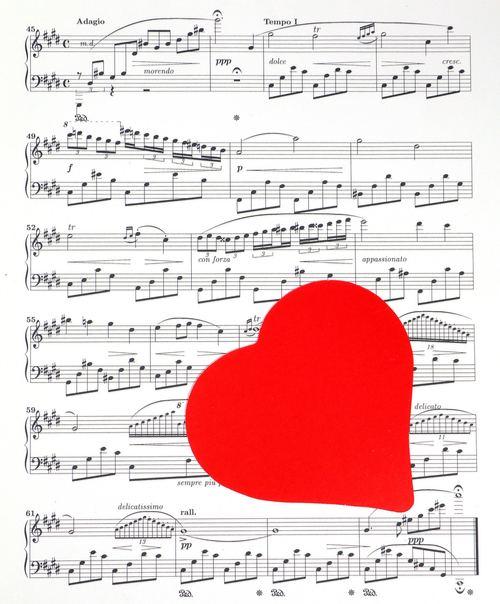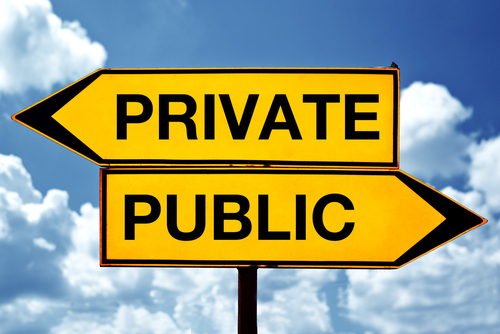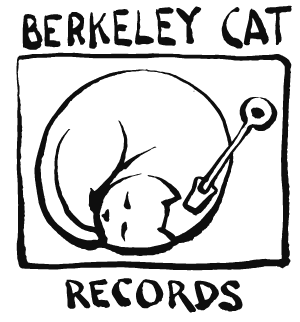by Matthew King Kaufman | Nov 15, 2019 | Blog, COPYRIGHT LAW, Free Listen, General, PUBLIC DOMAIN

So far this year there has been much written and published about the Public Domain. The concept of copyright expiration for the good of mankind has been around since the advent of copyright protection. This might be an old concept, but it has only come to being this year in the U.S. There have been many articles. This is a good one, about why and what comes into public ownership this year, so the public can use or enjoy the content without copyright restrictions. I try to make some of this music known. I’ve become interested in the roots of rock and roll, the Delta Blues. Son House, born in 1902. He was in his 20s when his songs were recorded by Alan Lomax.
Son House was discovered and promoted as a young man by reigning Delta Blues king, Charley Patton. House’s style would greatly influence Robert Johnson and Muddy Waters, and later Bonnie Raitt, John Hammond, Jr. and The White Stripes. Released in 1930, the 78 RPM vinyl of “Clarksdale Moan” was long considered a “Holy Grail” of lost blues recordings. Here’s an mp3 from an original copy found by an ecstatic collector in the 1990’s. An absolute treasure.
by Matthew King Kaufman | Jun 4, 2019 | Blog, COPYRIGHT LAW, General, PUBLIC DOMAIN

How Does Public Domain Music Work?
Public domain is an area of copyright law that’s extremely important for the preservation of historically great music, but it’s often confusing or intimidating to newcomers. How exactly does public domain music “work,” and how can you find songs and other pieces of music in the public domain?
The Basics of Public Domain
“Public domain” is a field that applies to many different areas of art, but in the music world, it refers to any song not covered by copyright law. It is completely legal and free to use this music in practically any way you choose.
A song can enter the public domain in one of four ways:
All rights to the music have expired. This is the most complicated circumstance. Essentially, copyright law has a fixed expiration date. Depending on the nature of the work and the laws that were and are currently in place, every piece of music’s copyright eventually expires—usually many decades after the original author’s death. Upon this expiration, the piece of work enters the public domain.
The music was created with the intention of being “public domain.” Some musicians intentionally create music for the public domain with no intentions of making use of copyright laws. This could be because they’re experimenting with new recording strategies, because they want more exposure, or just because they’re giving back to the community. In any case, their work is entirely up for grabs.
No copyrights for the music ever existed. There are some circumstances where the copyright for the work never existed. For example, all historical musical works (i.e., those created before 1922) are considered public domain. This is why it’s fairly easy to find sheet music for classic works.
The copyright was not renewed. If the copyright for an original piece of music is not renewed upon expiration, the piece may enter the public domain as well.
Why Is Public Domain Music Important?
Why does this matter to you? Some businesses have interest in using public domain music to save money on purchasing song rights, but for most people, the real value is getting to listen to some of the greatest music ever created—without paying a cent.
The past 100 years of music is a very recent history. From classical and folk music all the way through the earliest origins of jazz and blues, there have been inventive composers, talented performers, and groundbreaking innovators who set the stage for modern musicians to follow. Public domain gives you a chance to hear all these remarkable songs firsthand, for your personal enjoyment, for educational purposes, or to inspire you to create new music of your own.
Using a platform like PublicDomain4u.com , you can delve into the root influences of some of your favorite modern songs, discover artists you might have never considered before, and develop your tastes and sensibilities as a music connoisseur. If you’ve never delved into the world of classical, folk, blues, and jazz music history, you’ll be amazed at how much instrumental innovation, emotional composition, and historical relevance you can find in these songs—all of which are available for free.
The Copyright Term Extension Act and Public Domain Music
The is one of several legislative acts that have increased the terms of copyrights, and it’s of particular consequence because of the number of works released to the public.
Thanks to this act, all individually authored works, like songs, will enter the public domain 70 years after the author’s death. All corporate works will now enter the public domain either 120 years after they were recorded or 95 years after they released—whichever of these dates comes first. Any songs recorded between 1923 and 1946 may be protected for 100 years after they were released, expiring between 2023 and 2046, accordingly. Recordings between 1947 and 1956 will have 110 years of protection, expiring between 2047 and 2056, accordingly. And any recordings made between 1957 and 1972 will have protection terminated in 2067.
As you can see, this law doesn’t have much bearing on modern recordings; if there’s a song you like topping the charts today, it’s going to take a century or longer before it enters the public domain by default. You may also have to consult with state laws to determine if some works are copyrighted.
These terms serve as an extension of those created by the Copyright Act of 1976, which set copyright duration for the full life of the author plus another 50 years (or 75 years for corporate-authored works). Due to their introduction, works covered by copyright in 1998, if they were made in 1923 or later, would be delayed in entering the public domain. Basically, the additional 20 years of copyright coverage has led to a 20-year gap in songs entering the public domain (from 1999 to 2019).
How to Find Public Domain Music
If you’re eager to start listening, there are a few different approaches you can take to find public domain music. You could find an artist or musician who specializes in creating public domain music and follow them for regular new pieces. You could research the history of music and discover some of the greatest musicians who ever lived—then use Google searches to find recordings of specific songs they created. But it’s usually better to seek a platform that specializes in public domain music.
If you’re looking to discover more about the roots of jazz music, or if you want to dive deeper into the history of blues, you’ve come to the right place. At PublicDomain4U, you’ll find lists of free music in the public domain in multiple genres and categories. You can scope out the top 10 list, where you’ll find pieces like Mozart’s chamber ensemble composition Eine Kleine Nachtmusik, as well as an early recording of Swing Low, Sweet Chariot, a song that’s deeply ingrained in our culture, and other recordings that capture the mood and culture of an era long past. You can also browse by genre to find songs in a particular category, like blues, jazz, classical, folk, or instrumental. Here, you’re bound to find your next great musical passion—or possibly the inspiration to create some of your own!
by Matthew King Kaufman | Dec 18, 2018 | Blog, COPYRIGHT LAW, ENTERTAINMENT GEMS, FAIR USE, PUBLIC DOMAIN

First let’s make sure we understand the concept of the public domain
It consists of all the creative works to which no exclusive intellectual property rights apply. Those rights may have expired, been forfeited, expressly waived, or may be inapplicable. Wikipedia
This means the public owns these works, not an individual author or artist as copyright law dictates. With correct research, anyone can use a public domain work without obtaining permission, but no one can ever own it.
Here are some invaluable tools to understanding and finding Entertainment in the Public Domain:
Stanford University
Summed up the research required: There are four common ways that works arrive in the public domain:
- the copyright has expired
- the copyright owner failed to follow copyright renewal rules
- the copyright owner deliberately places it in the public domain, known as “dedication,” or
- copyright law does not protect this type of work.
Duke University
Did some research for us for this January 2019. According to them, on what They call “Public Domain Day.” No one owns the rights to these entertainment gems and more:
Safety Last!, directed by Fred C. Newmeyer and Sam Taylor, featuring Harold Lloyd
The Ten Commandments, directed by Cecil B. DeMille
The Pilgrim, directed by Charlie Chaplin
Our Hospitality, directed by Buster Keaton and John G. Blystone
The Covered Wagon, directed by James Cruze
Scaramouche, directed by Rex Ingram
Edgar Rice Burroughs, Tarzan and the Golden Lion
Agatha Christie, The Murder on the Links
Winston S. Churchill, The World Crisis
e.e. cummings, Tulips and Chimneys
Robert Frost, New Hampshire
Kahlil Gibran, The Prophet
Aldous Huxley, Antic Hay
D.H. Lawrence, Kangaroo
Elmer Rice, The Adding Machine
Bertrand and Dora Russell, The Prospects of Industrial Civilization
Carl Sandberg, Rootabaga Pigeons
Edith Wharton, A Son at the Front
P.G. Wodehouse, works including The Inimitable Jeeves and Leave it to Psmith
These timeless works of art contribute to mankind, and can be republished or used for free by any member of the public.
The story of multiple free uses of the film Frank Capra’s masterpiece “It’s A Wonderful Life is a lesson to us all. ”The copyright was not renewed (because of entertainment business reasoning), it became public domain in 1974, and television stations used the free programming whenever they wanted to save money during the Christmas season. Since then, the film soared in popularity to being considered #1 on the Best of the Christmas movies list.
If you’re a creator or a consumer, you’re still a member of the public, and these works are yours to enjoy because we all own them.
Please don’t confuse the “Fair Use” doctrine with “Public Domain.”
Both are exceptions to copyright protection, but “fair use” does not allow for public ownership it allows someone to use copyrighted material if it meets certain criteria, but the copyright is still owned by the original owner, not the public.





